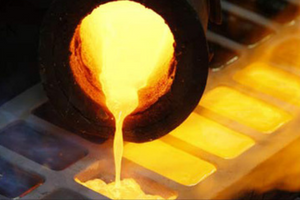Throughout the last 12 years, gold prices have steadily increased with zero decline in-between years.
Still, some insist that gold is an ancient relic that no longer has the historic monetary relevance it did in the past. They argue that hard currency is the preferred medium of exchange in today's marketplace.
On the other hand, given the astounding facts and figures, historically speaking, some believe that this gold is still a great investment option.
We think it's time to recognize the intrinsic value of gold, silver, and other precious metals in the global economy. There are countless articles regarding gold as a financial investment, but here we direct your attention to how gold influences our social, economic, and cultural exploits.
The historical role of gold
In contrast to other metals discovered across the planet, gold has maintained its high status due to three distinct factors:
- scarcity
- longevity
- malleability
Gold was the primary metal used in making jewelry and idols for several thousand years. Around 1500 BC, the ancient Egyptian empire reaped significant benefits from its gold-bearing region, Nubia, and gold became the first recognized means of exchange for world commerce. We started minting gold coins to make it easy to carry and exchange gold for goods and services.

Gold is not perishable and consistently maintains purity and fineness if appropriately preserved. One way or another, gold was the equivalent of modern currency for most of our history. Gold, in any form, was a way to show higher status and wealth.
All of this changed, though, when the US gave up the gold standard in 1973 and reinstated the private ownership of gold for US citizens in August 1974.
Since then, the price of gold has climbed from $156 per ounce to almost $1,650. Because gold was separated from the US currency and the effects of inflation from then till now, its purchasing value has more than doubled.
The cultural role of gold
In the past, alchemists “cured” fevers and pain by adding gold powder to medical concoctions. Most experts would agree that throughout history gold always had value regardless of economic systems or the way states were organized — monetary, religious, decorative, status are just some of the value types gold added to our society.

It continues to play a significant role in our culture and society today. Gold is the precious metal used to create many of our most valued possessions, including wedding rings, Olympic medals, money, jewelry, Oscars, Grammys, crucifixes, and works of art.
Humans are creatures of habit, and we live in packs
Collaborative work is characteristic of humanity that compels and motivates us to discover quick and effective methods for transferring commodities and services. Gold and other precious metals fit this role perfectly and they have been front and center for most of our history.
Gold offers the comfort of security and permanence
If the current paper-money system collapses, gold might not be beneficial immediately. But it will be in due course. We would switch to gold if a catastrophe made paper money and the system that backs it obsolete. Gold has the necessary properties, including durability, making it one of the few materials on earth that can fulfill its purpose.
Physical attributes that make gold valuable
Since gold can melt over a flame and doesn't rust, it is simple to work with and stamp into coins. Because gold has such brilliant color and doesn't erode, it became a symbol of immortality and status in many cultures across the globe and across history.

There is still no metal quite like gold, even though silver can be polished and textured to reflect light better and make it aesthetically more appealing. Gold, on the other hand, has a natural spectrum of distinct and lovely colors which attract attention. In actuality, the atoms in gold are heavier than those in silver and other metals. The nature of the atoms which make up gold is such that gold absorbs blue photos and reflects others which is the main reason why the light reflecting off of the material is colored this way. This phenomenon is explained by Einstein's special relativity and quantum mechanics.
The fact that gold is scarce means its value can be asserted with reasonable justification because there isn't an endless supply of it. Because it’s aesthetically pleasing to most humans and easy to shape into jewelry, gold is a valuable metal for people who like to accessorize. It’s a staple for the entire jewelry industry and is front and center in most shops that offer this type of merchandise.

A value not tied to any specific government
A monetary system called the "gold standard" linked the value of a currency to the price of gold. No government presently employs the gold standard. Britain ceased utilizing the gold standard in 1931; the US did the same in 1933. President Nixon, as a part of the infamous Nixon Shock, suspended the option of converting US dollars into gold in 1971.

Unlike the gold standard, "fiat money" refers to money recognized as a form of payment because a government has declared it acceptable. To control inflation and stop foreign countries from overwhelming the system by exchanging their dollars for gold, the United States gave up the gold standard in 1971.
So how can we compare this precious metal to a fiat paper currency like the US dollar?
Well, the biggest criticism of the current monetary system is the instability of paper currencies and the inflation-causing printing of currencies. The way the global economic system is set up, money can lose its value based on the performance of the country that it represents. This means that the value of money goes hand in hand with the success of the country. Gold is not tied to a single government and this allows it to avoid crashing due to inflation and is, therefore, a great way to diversify investments and portfolios.
Anti-inflation benefits
The inherent value of gold makes it a popular hedge against rising inflation. The idea here is that an anti-inflation investment should rise in value with the increase in consumer prices.
Gold has reached historic levels over the past ten years as an inflation hedge and deterrent to geopolitical risks, thanks to the liberal Central Bank policies like the Federal Reserve's recent quantitative easing initiatives.
Contrary to fiat money, precious metals retain their value over time. Therefore, their initial value will generally hold. In relative terms, an ounce of gold will always be an ounce of gold. Due to its durability, gold is a safer alternative for investing during uncertain times. Although it is not always 100% that gold will increase in price with inflation it generally tends to lose you less money than keeping your savings in cash.

Gold compared to other commodities
Let's examine other commodities first so we can better understand the worth of precious metals. The intrinsic value of each is clear: grain is food; wood builds homes and furnishings, and oil converts into energy for industrial uses. Oil is not just some shiny goo that is valued only because people "have confidence" in it. It’s valuable because it can be converted into gasoline and used in vehicles to transport people and their belongings over long distances.
The straightforward intrinsic value of these goods makes it very obvious why they are highly valued as trade goods. Their value can be tracked and changes in value can be anticipated by keeping an eye on the industries that utilize them. Still, they remain perishable and may become unusable or dramatically lose value due to economic circumstances.
Gold, on the other hand, remains nonperishable once mined. As civilizations advanced, gold became regarded as a reliable medium of exchange and has historically had more value than any other material commodity, never fully losing this special status regardless of changes in monetary policies.
Bottom Line
What makes gold valuable, then? Is it gold's historical proof of value?
When we’re talking about investing in gold, you cannot disregard the influence of human psychology. As long as economic recessions and depressions exist, precious metals will be a haven investment during uncertain times.
The most sensible option for a medium of exchange for goods and services is gold. There’s enough of it to satisfy market needs but is rare enough that no just anyone can get access to it. Humans need little convincing that gold has value. Gold doesn't tarnish, making it a sustainable store of value and the value societies and economies have assigned to gold has sustained that worth.
Gold has some more competition now that everything is becoming more digitized and we discover new methods to store value. But if you thought that one of the most persistent commodities is going to become obsolete any time soon, think again.

